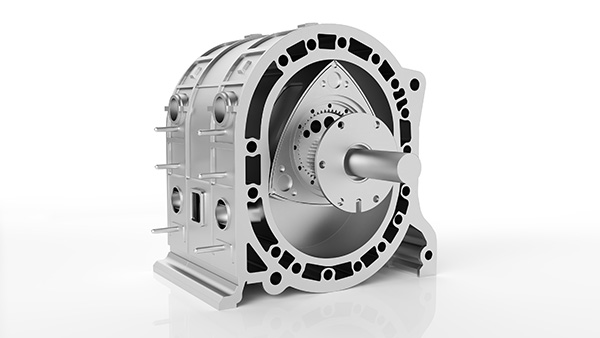
Mazda's rotary engine, also known as the Wankel engine, has long been a symbol of automotive innovation and engineering excellence. Unlike traditional piston engines, the rotary engine operates on a unique principle that sets it apart in both performance and design. But how exactly does this distinctive engine work, and what makes it so special?
A Brief History of the Rotary Engine
The rotary engine was invented by German engineer Felix Wankel in the 1950s. Mazda adopted and perfected this technology, making it a hallmark of their brand. The first car to feature a Mazda rotary engine was the Cosmo Sport, introduced in 1967. Since then, the rotary engine has powered several iconic Mazda models, including the RX-7 and RX-8, cementing its place in automotive history.
How the Rotary Engine Works
At the heart of the rotary engine lies its unique design, which consists of a triangular rotor that revolves inside an epitrochoidal (oval-shaped) housing. This design eliminates the need for the reciprocating motion of pistons found in conventional engines, resulting in fewer moving parts and a smoother operation.
So, how does this all come together to produce power? The rotary engine completes its four-stroke cycle—intake, compression, combustion, and exhaust—within each revolution of the rotor. Here's a closer look at each stage:
Intake
As the rotor moves, it creates a vacuum that draws the air-fuel mixture into the chamber through an intake port. The shape and motion of the rotor ensure a continuous flow of the mixture.
Compression
The rotor continues its rotation, compressing the air-fuel mixture against the walls of the housing. This compression is crucial for generating the necessary pressure for combustion.
Combustion
Once the air-fuel mixture is compressed, it is ignited by a spark plug. The resulting explosion forces the rotor to turn, converting the energy from combustion into rotational motion.
Exhaust
Finally, the rotor moves past the exhaust port, expelling the burnt gasses from the chamber. This clears the way for the next intake phase to begin, continuing the cycle.
Advantages and Disadvantages
The rotary engine boasts several advantages, which have made it a favorite among performance enthusiasts. Its compact size and lightweight design allow for a lower center of gravity in vehicles, enhancing handling and stability. The engine also produces high power relative to its size and weight, making it ideal for sports cars.
However, the rotary engine is not without its drawbacks. It tends to be less fuel-efficient than conventional piston engines, and the unique design can lead to higher oil consumption. The sealing of the rotor tips, known as apex seals, can be a point of wear and tear, requiring regular maintenance.
Innovations and Future of the Rotary Engine
Mazda has continuously innovated its rotary engine technology to address some of its inherent challenges. Recent advancements have focused on improving fuel efficiency and reducing emissions. Mazda has also explored hybrid configurations, integrating the rotary engine as a range extender for electric vehicles. This approach could offer a new lease on life for the rotary engine, combining its compact power with modern eco-friendly technology.
Why the Rotary Engine is Iconic
The rotary engine's uniqueness lies in its engineering elegance and the driving experience it offers. It provides a smooth, high-revving performance that is distinct from the feel of piston engines. For many automotive enthusiasts, the rotary engine represents a break from the norm, embodying a spirit of innovation and individuality.
Is your rotary engine in need of a tune-up? Visit Rix Automotive for expert maintenance and keep your engine running at top performance. Book your appointment now!